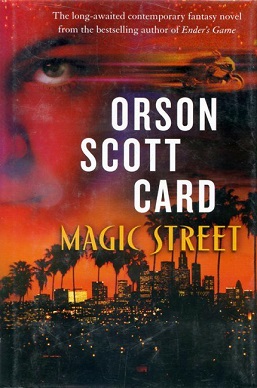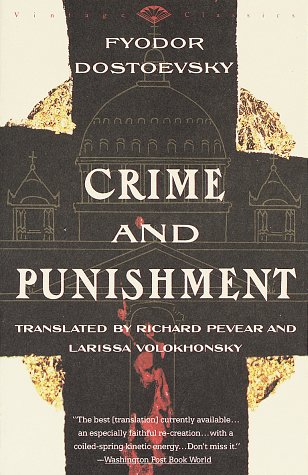 Iv'e always been a big fan of the Ender series’ and every once in a while I dabble into another of Card’s books. My brother Mike gave me this one a while back but I didn’t get to in until now. April and I read this one together as well. Our two-person-book club seems to be off to a good start. As a book club field trip we went around and saw the spots where the events of the book happen. They are all within a few miles of our house and the dogs could always use another walk. I think I liked the book more than April but I can still only give it a mixed review.
Iv'e always been a big fan of the Ender series’ and every once in a while I dabble into another of Card’s books. My brother Mike gave me this one a while back but I didn’t get to in until now. April and I read this one together as well. Our two-person-book club seems to be off to a good start. As a book club field trip we went around and saw the spots where the events of the book happen. They are all within a few miles of our house and the dogs could always use another walk. I think I liked the book more than April but I can still only give it a mixed review.First what I liked. I loved the alternate fantasy world of Los Angeles. It was a lot of fun to imagine the terrain that surrounds me as being wild and devoid of all the concrete. I also loved the sense of dread that occasionally carried the narrative. Card is good at horror. His short horror stories are actually pretty scary (something that is very hard to do in print). The first chapter of Magic Street is thoroughly creepy and instantly got me into the story.
My favorite aspect of the story was that of Word. He becomes this sort of faith healer/prophet but is unsure of whether his abilities come from God or from some more sinister source. I would have liked to see this line developed a little more. I wanted to see him struggle more with the corrupting forces of fame and power and really have to dig deep to reject it. I guess I’m starting to drift into what I didn’t like about the book. I wish Card wouldn’t have borrowed so much from Midsummer’s night’s dream. But at least he made sure to explicitly alert the reader to the fact that he was doing this. I also thought that the sex scene seemed a bit contrived and really only existed as a way of advancing the plot. It was just a little out of place and it made me loose attention.
Magic Street was nevertheless a fun read so I give it a mild recommendation. But I may be a bit biased because I live where it takes place.
Most of the events take place in an area called Baldwin Hills. Baldwin Hills is just south of our apartment. It is an affluent, mostly African American, neighborhood that is sometimes called the black Beverly Hills.
 Cloverdale in Baldwin Hills
Cloverdale in Baldwin Hills Mack’s house
Mack’s house
 Yolanda’s house
Yolanda’s house
Downtown with Yolanda’s house, the hairpin turn, and the field
 Word’s house
Word’s house See's Candies
See's Candies Avenue of the Stars Olympic Blvd Overpass
Avenue of the Stars Olympic Blvd Overpass The scene of the last battle in Century City. The building behind the battlefield is in Die Hard.
The scene of the last battle in Century City. The building behind the battlefield is in Die Hard. 



 Last night we went to the Bet Tzedek Justice Ball in Hollywood curtesy of Mac’s law firm. It was a total swank fest. The tickets were worth $150. But because we have cool friends we got to go for free and got to try and pretend like we fit in with L.A’s elite. The Psychedelic Furs played and we even got swag bags, though I'm sure that they don’t compare to the ones they give out at the Academy Awards.
Last night we went to the Bet Tzedek Justice Ball in Hollywood curtesy of Mac’s law firm. It was a total swank fest. The tickets were worth $150. But because we have cool friends we got to go for free and got to try and pretend like we fit in with L.A’s elite. The Psychedelic Furs played and we even got swag bags, though I'm sure that they don’t compare to the ones they give out at the Academy Awards. 

 I can’t say I blame her. It was pretty pathetic. I certainly wouldn’t want to kiss this.
I can’t say I blame her. It was pretty pathetic. I certainly wouldn’t want to kiss this.
 I guess I won’t be joining ZZ Top any time soon.
I guess I won’t be joining ZZ Top any time soon. 









 Advances in technology are now making this dream possible. One of these is the inevitable universal access to wireless and or wi fi internet. Wireless internet will soon be accessible anywhere on the planet much as cell phone access is becoming universal. With this in mind a new kind of subscription service can provide music to consumers with everything they want at a modest price. With wireless internet everywhere on the planet there is no reason why people could not access a subscription service directly from their portable devices. Call it device direct subscription. This is a variation of the so called ‘heavenly jukebox,’ an idea that has been floating around the music industry for a few years now. With device direct subscription subscribers could access a subscription service not only from their computers but directly from any portable devices that they authorize as well, just as itunes currently allows users to authorize up to five computers to play music on a single account. Likewise subscribers to device direct subscription could authorize several portable devices to access the subscription service via their account. Direct device subscription would be extremely appealing to consumers because it would provide the subscriber with the complete freedom to listen to any song anywhere anytime. This freedom would have tremendous appeal. For example say a subscriber is driving in their car with a friend and this friend tells the subscriber about some great new band or song. Instead of having to go home and look the artist up on a computer the subscriber could instantly listen to the song on their portable device.
Advances in technology are now making this dream possible. One of these is the inevitable universal access to wireless and or wi fi internet. Wireless internet will soon be accessible anywhere on the planet much as cell phone access is becoming universal. With this in mind a new kind of subscription service can provide music to consumers with everything they want at a modest price. With wireless internet everywhere on the planet there is no reason why people could not access a subscription service directly from their portable devices. Call it device direct subscription. This is a variation of the so called ‘heavenly jukebox,’ an idea that has been floating around the music industry for a few years now. With device direct subscription subscribers could access a subscription service not only from their computers but directly from any portable devices that they authorize as well, just as itunes currently allows users to authorize up to five computers to play music on a single account. Likewise subscribers to device direct subscription could authorize several portable devices to access the subscription service via their account. Direct device subscription would be extremely appealing to consumers because it would provide the subscriber with the complete freedom to listen to any song anywhere anytime. This freedom would have tremendous appeal. For example say a subscriber is driving in their car with a friend and this friend tells the subscriber about some great new band or song. Instead of having to go home and look the artist up on a computer the subscriber could instantly listen to the song on their portable device.
 Device direct subscription is a format in which the album can survive. Currently with internet downloads people don’t buy or even steal albums they download the songs they like. With a subscription service, listening to other songs on an album requires no purchase and no download time or disk space. As a result people will be more likely to give the other songs on an album a listen if they like one or more of the songs from the artist. This would allow artist and labels to generate additional royalties by posting entire albums on the service.
Device direct subscription is a format in which the album can survive. Currently with internet downloads people don’t buy or even steal albums they download the songs they like. With a subscription service, listening to other songs on an album requires no purchase and no download time or disk space. As a result people will be more likely to give the other songs on an album a listen if they like one or more of the songs from the artist. This would allow artist and labels to generate additional royalties by posting entire albums on the service. Device direct subscription is attractive enough that consumers will be willing to pay for it. P2P downloading takes time and carries with it the risk of viruses and prosecution. Subscription, on the other hand, is safe and takes little time because there is no downloading. Right now the paradigm is ownership. Listeners like to own their music because ownership gives them the freedom to listen music any time. With device direct subscription there is no longer any need for ownership because listeners will enjoy the same freedoms that come from ownership with the added benefit of a virtually infinite music library.
Device direct subscription is attractive enough that consumers will be willing to pay for it. P2P downloading takes time and carries with it the risk of viruses and prosecution. Subscription, on the other hand, is safe and takes little time because there is no downloading. Right now the paradigm is ownership. Listeners like to own their music because ownership gives them the freedom to listen music any time. With device direct subscription there is no longer any need for ownership because listeners will enjoy the same freedoms that come from ownership with the added benefit of a virtually infinite music library.